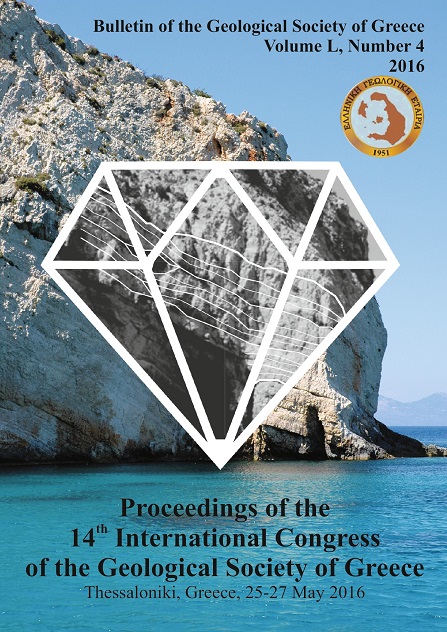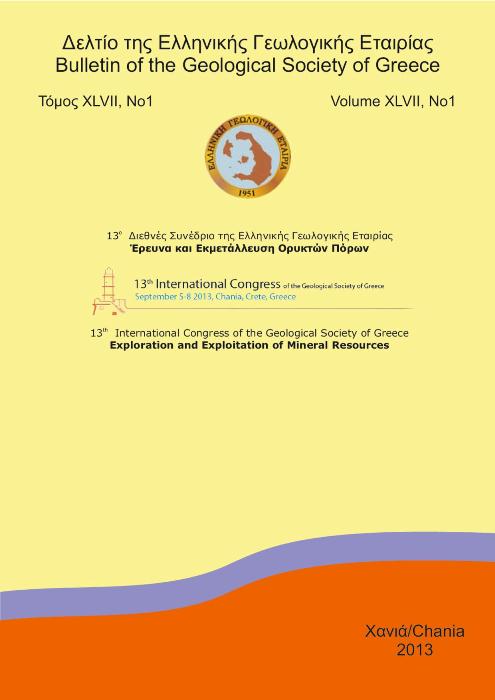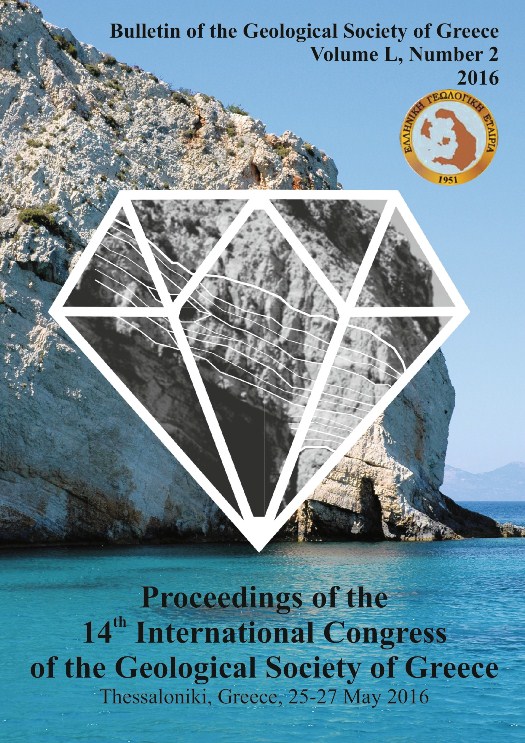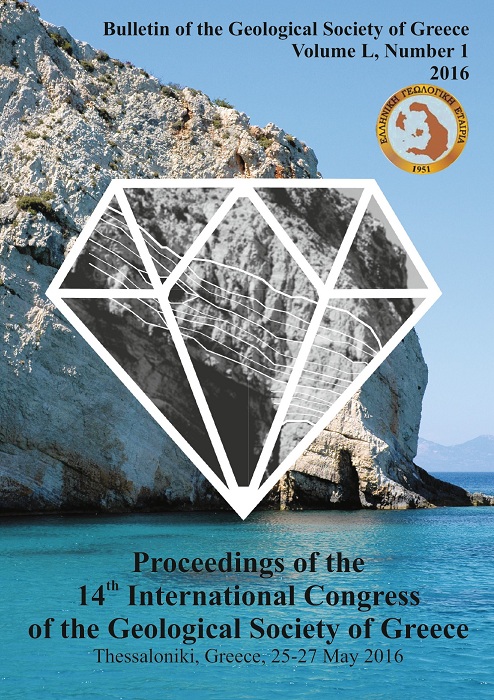MUDPOTS AT STEFANOS HYDROTHERMAL CRATER OF NISYROS VOLCANO. AN INSIGHT AT THE HYDROTHERMAL PROCESSES OF AN ACTIVE VOLCANO
Résumé
On Nisyros island as a result of the volcanic activity and active tectonic, a hydrothermal system develops and it is expressed by 5 types of surface manifestations: i) thermal springs, ii) fumaroles iii) hydrothermal craters, iv) hot grounds and v) mudpots. In general, a mudpot could be described as an acidic hot spring and fumarole with limited water which it is formed in high temperature geothermal areas. Water sample and depositions of mudpots collected, analyzed and studied from Stefanos hydrothermal crater, which is the only site on Nisyros Island, where mudpots occur. Mudpots water is very acidic (pH=2.4), with high sulfate concentration (1375mg/L), due to the H2S(gas) and temperature near the boiling point. As a result, elemental sulfur is found inside the depositions alongside with products of the hydrothermal alteration of the surrounding rocks. In the water and in the depositions were found high concentrations in several elements (e.g. in water: 55mg/L Fe; 19.5mg/L Zn, in depositions: 430mg/Kg Pb; 72mg/Kg Cu; 60mg/Kg Cr) reflecting the alterations processes which are taking place.
Article Details
- Comment citer
-
Kanellopoulos, C., & Xirokostas, N. (2016). MUDPOTS AT STEFANOS HYDROTHERMAL CRATER OF NISYROS VOLCANO. AN INSIGHT AT THE HYDROTHERMAL PROCESSES OF AN ACTIVE VOLCANO. Bulletin of the Geological Society of Greece, 50(4), 1838–1848. https://doi.org/10.12681/bgsg.14112
- Rubrique
- Petrology and Mineralogy

Ce travail est disponible sous licence Creative Commons Attribution - Pas d’Utilisation Commerciale 4.0 International.
Authors who publish with this journal agree to the following terms:
Authors retain copyright and grant the journal right of first publication with the work simultaneously licensed under a Creative Commons Attribution Non-Commercial License that allows others to share the work with an acknowledgement of the work's authorship and initial publication in this journal.
Authors are able to enter into separate, additional contractual arrangements for the non-exclusive distribution of the journal's published version of the work (e.g. post it to an institutional repository or publish it in a book), with an acknowledgement of its initial publication in this journal. Authors are permitted and encouraged to post their work online (preferably in institutional repositories or on their website) prior to and during the submission process, as it can lead to productive exchanges, as well as earlier and greater citation of published work.







